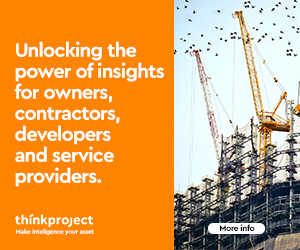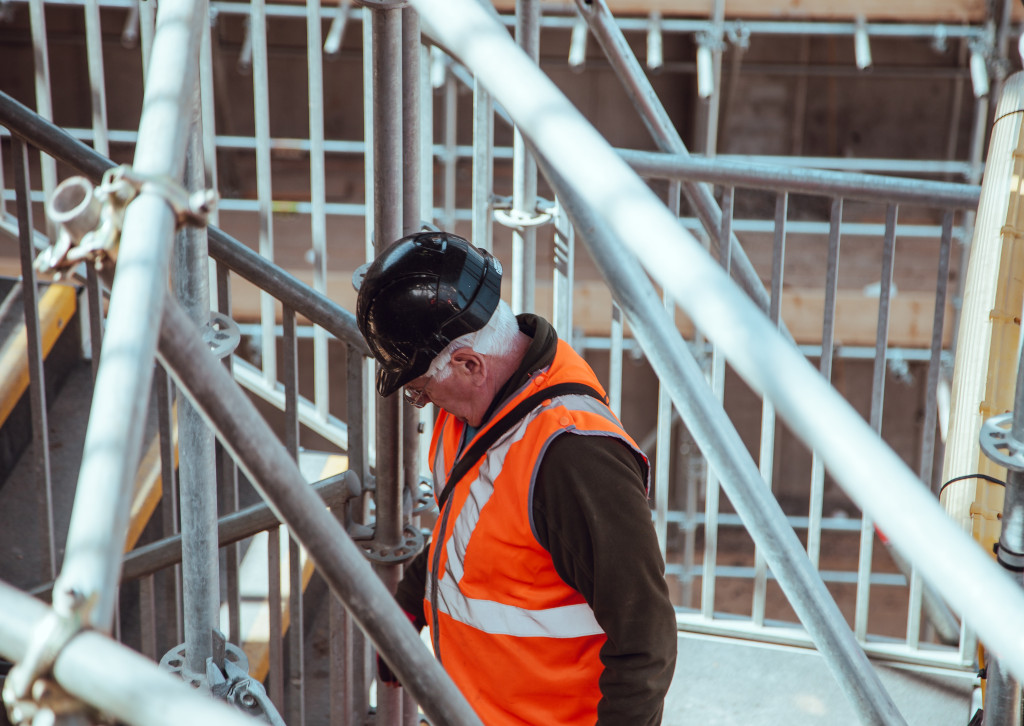
She and I sat in the room, and…I was like, ‘Wow, we’re actually going to build this thing.’
Fact: civil engineering is everywhere. We see it in our roads, bridges, airports, and practically all public and private infrastructure projects. Civil engineering is one of the most important fields we have today, and it will continue to be vital for as far as we can see into the future.
Here to talk more about this topic is Jon Turner, President and Principal Engineer at Phoenix Civil Engineering. We recently caught up with Jon and had a lively conversation about the past, present, and future of civil engineering.
Tell us a little bit about Phoenix Civil Engineering and what you specialize in.
We’re a small design and engineering firm and we do civil engineering design work. Our work consists of pipeline design, water, wastewater, recycled water, and storm drain systems; pump station designs, road rehabilitation projects. We also do a lot of pipeline rehabilitation projects. We design projects using trenchless technologies, which is primarily, lining, pipe bursting, horizontal directional drilling, that kind of thing.
We’re five people and my vision is that our firm remains lean, mean, and nimble. We’re able to get in and get out. We’re efficient. And efficiency is what our strength is.
Ninety-nine percent of our clients are municipalities — they’re typically water agencies, wastewater agencies, cities, counties, and special districts.
We also help some of our clients if they need assistance with pre-planning or a feasibility study of their projects. Some of our clients use us all the way through construction because we also provide construction management or design services during construction for their projects.
I have a very lean and mean group which I’m incredibly proud of. We’re a family business with five employees, yet we’re able to take interesting projects of all sizes. We do $5,000 projects for some clients, but we’re also entering into the construction phase of a $21 million pump station and pipeline project that we designed. So, there’s quite a range for the jobs we handle.
Walk us through your career and what led you to becoming President/Principal Engineer.
I’ll give a shout-out to Cal Poly, San Luis Obispo. That’s where I went to school. I was born in Ventura, went to Ventura College for a couple of years, transferred to Cal Poly, then got hired by Boyle Engineering Corporation. They’ve since been acquired by AECOM.
In terms of my career background, I worked for a national consulting firm at the beginning of my career, where we did everything, including architecture, mechanical, civil, electrical, and instrumentation. I quit that firm and I started working for a local municipality in Ventura County. I was the Deputy Public Works Director and then Interim Public Works Director.
So, I worked in the public sector for four years, and then in 2010, I started Phoenix Civil Engineering with my wife, Roz. She runs the office and pretty much manages everything that I don’t do. We also have our employees who kick tail and take names.
As construction evolves, how do you see your role changing?
I’ll preface this by pointing out that there’s a real struggle right now to find talented individuals for engineering and construction roles. And this isn’t new. Back in the early 2000s, it seemed like everybody wanted to be a dot-commer or they wanted to sell real estate. From my perspective, it looked like there weren’t a lot of people graduating in civil engineering.
Fast-forward to the mid-to-late 2000s, and there seemed to be almost a disappearance of people getting into engineering. And then the recession hit, and all of the seasoned contractors hung up their tool belts and retired — or decided to do other things. So we lost all of that great intelligence and talent in the hands-on part of our industry.
Now, we’re seeing similar trends. It’s tough to hire and find people these days; I’m hearing from contractors, and they’re struggling with the same thing. They just can’t find people to swing a hammer or run the shovel or run the equipment. They’re hurting for talent. Add the fact that we just went through a pandemic and there’s also a shortage of materials. The result is that everybody’s on edge.
All that being said, I think we are going to see a resurgence in the next 5 to 10 years. People will get back into the field and take an interest in it because they’ll see that civil engineering is the broadest of all engineering disciplines. When people drive to work — civil engineering is allowing that to happen. When folks are able to drink out of their tap, and flush their toilet, and have a house — all of that is civil engineering. The field has a huge breadth of opportunity.
So, that’s what I’m seeing. There’s probably going to be a lot of pain for a couple of years, but things will eventually untangle, and we’ll come back much stronger. After all, engineering is known for innovation. We’re going to see more of that, as well as automation. For instance, we see contractors on iPads, video conferencing, and other technologies. I think all that will continue going forward.
What project are you most proud of working on in your career? Why?
It would definitely be the project I mentioned earlier, the $21 million pump station and pipeline. I’m forever grateful that the client had confidence in a five-person office with all of our consultants that we used as subs to design this and get it put out. It’s mind-blowing.
She and I sat in the room, and I was beaming. I was like, “Wow, we’re actually going to build this thing.”
It was a labor of love, though. There were days when I wanted to kill it and there were days when it was trying to kill me. It was a very long project, duration-wise. There were a lot of challenges and lots of twists and turns, so it’d be a great novel.
But now the project is out and I went to the precon with my associate engineer. She and I sat in the room, and I was beaming. I was like, “Wow, we’re actually going to build this thing.”
So yes, it was a lot of fun. My staff would probably kill me if I took on another one right away, but still, it was a lot of fun.
What are the biggest challenges you face in your role?
Communication is key. I can’t stress it enough. But it’s one of those skills that isn’t really cultivated. I know schools try to teach communication and they even have classes for it. But I don’t think people really grab what makes communication work. And it’s a constant battle. There are days when things click and it’s great. And there are days when the communication is not there and it’s frustrating.
Technology has helped in that regard — FaceTime, Zoom video conferencing, email, all that stuff. Email is great, but video conferencing is a game-changer. It is so much better because facial expressions are always missing in emails. You can put a smiley face or an exclamation point, but if you don’t see the person’s face when they’re telling you what they’re saying, you don’t know if they’re joking with you, if they’re serious, if they’re irritated. Video now allows people to have that meeting.
As far as tools go, we’re huge Instant Messengers. It’s like a tornado here in our office; a verbal tornado, but it’s all done electronically. And it’s great because I’m not having to walk down the hall, and say, “Hey, can you come into my office?”
Of course, verbal communication is still essential. But it all goes together. When you’re able to use all these different tools, it can really help out, especially when we’re busy. For instance, the minute and a half it takes for me to walk down to someone’s desk is time I could spend sending an email.
When you think about the future, what are your plans to advance innovation and productivity at Phoenix Civil Engineering?
We’re automating things. We’re five people and my vision is that our firm remains lean, mean, and nimble. We’re able to get in and get out. We’re efficient. And efficiency is what our strength is.
I admit that I was kind of resistant to technology at first, but once I saw the benefits, I never went back.
This is where construction technology like Autodesk Build comes in. I admit that I was kind of resistant to technology at first, but once I saw the benefits, I never went back. At Phoenix Civil Engineering, we started with a program that allowed us to upload project specs and plans for use at the project site, as well as to generate reports. It was great because we did not have to haul around a bunch of paper. We then transitioned from that platform to PlanGrid.
When Autodesk absorbed PlanGrid, my wife Roz spent a lot of time with the Build team making suggestions and talking about how the platform can be improved. That was really beneficial because changes were made, and now we really like Autodesk Build.
In fact, I was just showing the rest of the team on the design side how to use it. I’m going to be teaching the contractor and his team on Monday how to use the Build program for submittals and things like that.
We also just bought 26 licenses for our project because we sold it to the client and we said, “This is what we use. This is what we like, and this is what works.” They wanted us to use a different program, but we decided against it. Why relearn another program when Autodesk Build already provides a solid solution?
What advice would you give to the next generation of men and women entering and preparing for the future of the industry?
I would say that they really need to understand what this industry offers and they need to go to a strong educational institution. It’s like buying a computer. You always want to stretch past what you can really afford. The same thing goes with education. You really want to push yourself to get the best thing in education you can.
I would also say that you need to go out there and — as scary as it seems — be an intern. You need to intern in this profession.
One thing that scares me is nobody wants their kid to be a foreman or foreperson or a superintendent. But we’re in trouble if we don’t get young people into the trades — i.e., the contractor, electrical, mechanical, all of that stuff.
I can sit at my desk and push out designs all day long, but if there’s no one to put it together, it’s a waste of the client’s money. This is where good quality construction professionals and engineers come in.
In order to be at the top of your game, you need to jump in there and learn from older people who can hand those experiences down because quite frankly, someday you’re going to be the old person. And if you never learned how to do things, you’re not going to have anything to offer.
Back in the late ’90s, early 2000s, the real estate market was through the roof. Everybody wanted to be real estate agents because they’re selling million dollar homes and getting these commissions. That’s all well and good, but what happens when people aren’t buying houses?
Civil engineering, on the other hand, is one of the oldest professions and it’s going to be around for the long run. You’re not going to get away from it. You’re always going to need water. You’re always going to want to go somewhere and live somewhere. All of that is civil engineering. I’m being very broad brush about it, but I think it’s important for people to recognize this.
Also, an engineer doesn’t have to be a stuffy person with a pocket protector. You can be a cool engineer or contractor if you choose to be one.
Want to read more stories like this?
I regularly interview construction leaders to promote knowledge sharing. We’ll cover what works, what doesn’t, and what the future holds. Check out our entire series of Behind the Build interviews, featuring some of the best in construction.
The post Behind the Build: Interview with Jon Turner, President and Principal Engineer, Phoenix Civil Engineering appeared first on Digital Builder.
Did you miss our previous article…
https://www.arizonasolarsociety.com/?p=528















